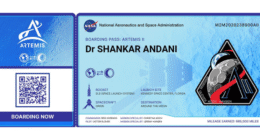The business landscape in India has witnessed a burgeoning trend in recent years – the rise of minimalist branding. As companies seek to simplify their messaging and aesthetics, minimalist branding has become increasingly popular across various industries. This shift towards minimalism reflects a broader global trend towards cleaner, more streamlined design and communications strategies.
One of the key reasons behind the rise of minimalist branding in Indian markets is the shift towards a more sophisticated and discerning consumer base. In today’s digital age, consumers are inundated with information and advertising on a daily basis. As a result, brands are realizing the importance of cutting through the noise and connecting with consumers in a more meaningful and impactful way. Minimalist branding offers a way to do just that by focusing on essential elements and creating a strong visual identity that resonates with the target audience.
Moreover, minimalist branding aligns well with the principles of simplicity and elegance that are increasingly valued by consumers. In a cluttered market environment, brands that can communicate their message clearly and concisely stand out from the competition. By stripping away unnecessary elements and focusing on the core values of the brand, companies are able to create a strong and memorable brand identity that appeals to modern consumers.
Another factor driving the uptake of minimalist branding is the global influence of design trends. With the rise of social media and international brands entering the Indian market, consumers are exposed to a wide range of design styles and aesthetics from around the world. Minimalist branding, with its clean lines, bold typography, and restrained color palettes, has become a popular choice for companies looking to project a modern and sophisticated image.
In addition to its aesthetic appeal, minimalist branding also offers practical benefits for businesses. By simplifying their branding and visual identity, companies can reduce costs associated with branding materials and marketing collateral. Minimalist designs are often more versatile and can be easily adapted across different platforms and mediums, making them a cost-effective choice for brands looking to maintain a consistent and cohesive image.
Several Indian companies have successfully embraced minimalist branding in recent years, leveraging its benefits to connect with consumers and strengthen their market presence. From startups to established brands, companies across sectors such as technology, fashion, and consumer goods are adopting minimalist design principles to create a compelling brand identity that resonates with their target audience.
For instance, tech companies like Flipkart and Paytm have adopted minimalist logos and branding elements to convey a sense of trustworthiness and professionalism. By streamlining their visual identity, these companies are able to communicate their core values and services in a clear and concise manner, helping them stand out in a crowded marketplace.
Similarly, fashion brands like Myntra and FabIndia have embraced minimalist branding to appeal to a younger, more design-conscious audience. With clean and contemporary logos, simple typographic treatments, and sophisticated color palettes, these brands are able to project a stylish and aspirational image that resonates with their target demographic.
Overall, the rise of minimalist branding in Indian markets reflects a broader shift towards simplicity, clarity, and sophistication in brand communication. By focusing on essential elements and creating a strong visual identity, companies are able to differentiate themselves in a competitive market environment and connect with consumers on a deeper level. As the trend towards minimalism continues to grow, we can expect more Indian companies to embrace this design philosophy and reap the benefits of a strong and distinctive brand identity.



